Creep test PDF

| Title | Creep test |
|---|---|
| Author | Ahmed Elkadi |
| Course | Strength and testing of materials |
| Institution | The American University in Cairo |
| Pages | 9 |
| File Size | 343.8 KB |
| File Type | |
| Total Downloads | 1 |
| Total Views | 159 |
Summary
Creep test...
Description
Construction and Architecture Engineering Department
ENGR-2112 Creep Test Dr. Yosra ElMaghraby ENG. Shada Philip
Name: Ahmed ElKadi 900182440 Abdullah Shehab 900172656
Summary: Creep occurs in metals and certain nonmetallic materials, such as thermoplastics and rubbers, and it can occur at any temperature; lead, for example, creeps under a constant tensile load at room temperature. However, for metals and their alloys, creep of any significance occurs at high temperatures, beginning at about 200°C (400°F) for aluminum alloys and at about 1500°C (2800°F) for refractory alloys. The creep test consists of putting a specimen under a constant tensile load (hence, constant engineering stress) at elevated temperature and measuring the changes in length at various time increments. The specimen eventually fails by necking and fracture, called rupture or creep rupture. As expected, the creep rate increases with specimen temperature and applied load.
Introduction: This experiment was made to test for the creep of a sample of lead that has been placed under the effect of three different loadings. The creep is the increase in strain in parallel with time while applying constant of stress at constant temperature, this concludes that lead was the most suitable to use for evaluation of creep because it has the shortest time in which creep could be obvious and clearly identified. Anyways, if performed on steel or another material, it would take years to obtain results that could prove the idea of creep due to steel having a very high melting/boiling point (650°C.) which it means that it has to be placed in high temperature furnaces which are both costly and time consuming. It is known to be that creep is largely observable when it’s the temperature of the material hits above about 0.4 of its melting temperature which is where the material starts to witness second and third stages of creep. Theory: strain Ɛ = ∆L/L; where ∆L = change in length ,
L= gauge length
The creep equation Ɛ = Ɛo +m t; where Ɛo = instantaneous strain,
m = slope of straight line, t = time
Stages of Creep: Primary stage: is the early stage of loading when the creep rate decreases rapidly with time. Secondary stage: where it reaches a steady state. Tertiary stage: where rapid increase and fracture take place.
Objectives: 1. 2. 3. 4.
Draw the creep curve for lead metal at different stresses. Conclude the creep equation at each stress. Study the creep stages. the factors that affect both the creep strength and life.
Experimental Work:
1. Creep measurement machine is set and the lead specimen is gripped using pin type of grip. 2. Extensometer in mounted which is used to record the deformation experienced by the specimen over time. 3. Dead weight is added and stop is started at the same instant. 4. Extensometer reading is recorded every 10 seconds till fracture. 5. Use stopwatch to keep track of the time. Equipment: Creep machine: Lever type machine; consists of an arm, dial gage and a place to fix the specimen.
Specimen: Lead.
Results Strain and extension of lead for 650g load Time
Strain
Extension (mm)
0 10 20 30 40 50 60 70 80 90 100 110 120
0.156 0.188 0.2 0.21 0.2184 0.2284 0.2372 0.25 0.2716 0.3 0.364 0.464 0.64
3.9 4.7 5 5.25 5.46 5.71 5.93 6.25 6.79 7.5 9.1 11.6 16
Strain vs time for 650g load 0.7 0.6
Strain
0.5 0.4 0.3 0.2 0.1 0
0
20
40
60
Time (s)
80
100
120
140
The creep equation
Ɛ = Ɛo +m t
where Ɛ o = instantaneous strain = 0.156 m = slope of straight line =0.001 t = time
Creep equation 650g 0.3 0.25 0.2 0.15 0.1 0.05 0 0
20
40
60
80
100
120
140
Time (s)
Strain and extension of lead for 750g load Time (s)
Extension (mm) 0 10 20 30 40 50 60
Strain 4.6 5.54 5.98 6.45 7.05 8.5 10.5
0.184 0.2216 0.2392 0.258 0.282 0.34 0.42
Strain vs Time for 750g load 0.45 0.4 0.35 0.3
Strain
0.25 0.2 0.15 0.1 0.05 0
0
10
20
30
40
50
60
70
Time (S)
The creep equation
Ɛ = Ɛo +m t
where Ɛ o = instantaneous strain = 0.184 m = slope of straight line =0.0021 t = time
Creep equation 750g 0.35 0.3 0.25 0.2 0.15 0.1 0.05 0 0
10
20
30
40
50
60
70
Time (s)
Strain and extension of lead for 800g load Time (s)
Strain 0 10
Extension (mm) 0.156 0.276
3.9 6.9
20 30 40 50
0.304 0.344 0.408 0.572
7.6 8.6 10.2 14.3
Strain vs time 800g load 0.7 0.6
Strain
0.5 0.4 0.3 0.2 0.1 0
0
10
20
30
40
50
60
Time (s)
The creep equation
Ɛ = Ɛo +m t
where Ɛ o = instantaneous strain = 0.156 m = slope of straight line =0.0034 t = time
Creep equation 800g 0.35 0.3 0.25 0.2 0.15 0.1 0.05 0 0
10
20
30
40
50
60
Time (s)
Load (g) 650
Initial length (mm) 25
Final length (mm) 41
Time to fracture (s) 120
750 800
25 25
35.5 39.3
60 50
Discussion There is a lot that goes inside the specimen during the creep test to obtain such results. The expected graph was as shown divided into three main different parts. This deformation which is seen in each specimen is caused by the application of different weights on the specimen which causes the three phases of deformation. The first phase is called primary phase where the curve is a decreasing one. This occurs just after the load is released. The next phase is called the secondary phase which occurs after the rate of extension keeps decreasing. In this phase the extension of the specimen is linear with respect to time. This is shown in the graph being nearly a straight line. In the third phase of the test, which is called the tertiary the specimen starts extending in a high rate, this is the phase where it is called necking. The specimen eventually fails by necking and fracture, called rupture or creep rupture.
Conclusion and recommendation The test we have done has clearly showed the three phases of the experiment. Using the three loads we were able to obtain the gradient which is the second phase in the graph. Using this and the initial strain we obtained the creep equation. For the upcoming experiments I think it would be better measuring the exact initial length in each specimen as small length variations can have an effect on obtaining the strain which can make results in accurate. Another source of error is that extension is read manually using an analogue device if the is read by computer or read using digital device it would be better....
Similar Free PDFs

Creep test
- 9 Pages

Creep test - lab report
- 6 Pages

Creeo - Creep
- 2 Pages

Creep o fluencia lenta
- 23 Pages

Creep-relaxation & recovery
- 2 Pages

Tesis de Creep David Ortiz
- 99 Pages
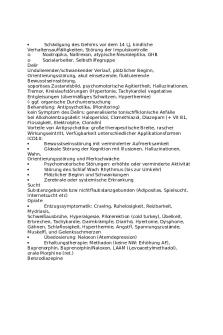
Test - test
- 1 Pages
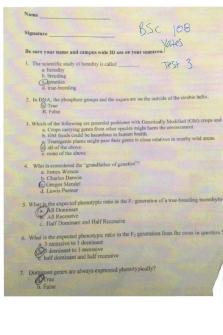
Yates Test 3 - Test
- 7 Pages
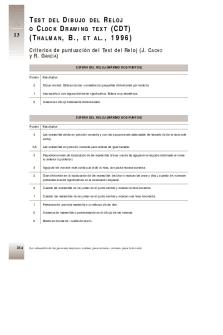
Test-reloj - test
- 4 Pages
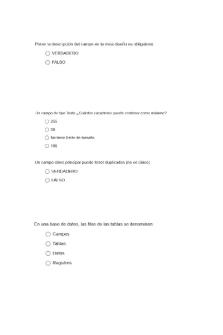
Test Access 2010 - Test
- 6 Pages
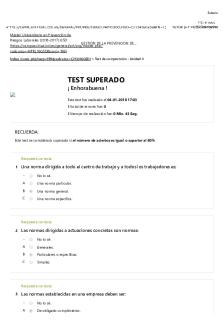
Resultado Test 842 - TEST
- 2 Pages
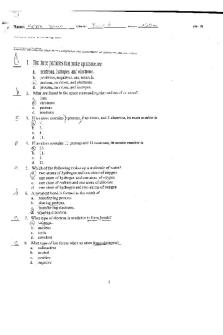
AP. Bio. Test - test
- 4 Pages
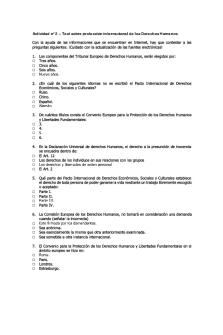
Test
- 4 Pages
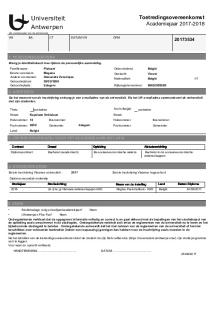
TEST
- 1 Pages

Chapter 4-test - test
- 23 Pages
Popular Institutions
- Tinajero National High School - Annex
- Politeknik Caltex Riau
- Yokohama City University
- SGT University
- University of Al-Qadisiyah
- Divine Word College of Vigan
- Techniek College Rotterdam
- Universidade de Santiago
- Universiti Teknologi MARA Cawangan Johor Kampus Pasir Gudang
- Poltekkes Kemenkes Yogyakarta
- Baguio City National High School
- Colegio san marcos
- preparatoria uno
- Centro de Bachillerato Tecnológico Industrial y de Servicios No. 107
- Dalian Maritime University
- Quang Trung Secondary School
- Colegio Tecnológico en Informática
- Corporación Regional de Educación Superior
- Grupo CEDVA
- Dar Al Uloom University
- Centro de Estudios Preuniversitarios de la Universidad Nacional de Ingeniería
- 上智大学
- Aakash International School, Nuna Majara
- San Felipe Neri Catholic School
- Kang Chiao International School - New Taipei City
- Misamis Occidental National High School
- Institución Educativa Escuela Normal Juan Ladrilleros
- Kolehiyo ng Pantukan
- Batanes State College
- Instituto Continental
- Sekolah Menengah Kejuruan Kesehatan Kaltara (Tarakan)
- Colegio de La Inmaculada Concepcion - Cebu
